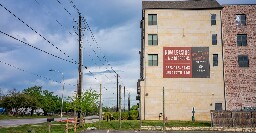America’s Magical Thinking About Housing: The city of Austin built a lot of homes. Now rent is falling, and some people seem to think that’s a bad thing



If you want to understand America’s strange relationship with housing in the 21st century, look at Austin, where no matter what happens to prices, someone’s always claiming that the sky is falling.
In the 2010s, the capital of Texas grew faster than any other major U.S. metro, pulling in movers from around the country. Initially, downtown and suburban areas struggled to build enough apartments and single-family homes to meet the influx of demand, and housing costs bloomed across the region. Since the beginning of the pandemic, even as rent inflation has gone berserk nationwide, no city has experienced anything like Austin’s growth in housing costs. In 2021, rents rose at the most furious annual rate in the city’s history. In 2022, rent growth exceeded every other large city in the country, as Austin’s median rent nearly doubled.
This might sound like the beginning of a familiar and depressing story—one that Americans have gotten used to over the past few decades, especially if they live in a coastal blue state. California and New York, anchored by “superstar” clusters in Silicon Valley, Hollywood, and Wall Street, have pulled in some of the nation’s most creative workers, who have pushed price levels up. But a combination of stifling construction regulations, eternal permitting processes, legal tools to block new development, and NIMBY neighbors restricted the addition of more housing units. Rent and ownership costs rose in America’s richest cities, until families started giving up and moving out. As the economics writer Noah Smith has argued, California and New York are practically driving people out of the state “by refusing to build enough housing."
But Austin—and Texas more generally—has defied the narrative that skyrocketing housing costs are a problem from hell that people just have to accept. In response to rent increases, the Texas capital experimented with the uncommon strategy of actually building enough homes for people to live in. This year, Austin is expected to add more apartment units as a share of its existing inventory than any other city in the country. Again as a share of existing inventory, Austin is adding homes more than twice as fast as the national average and nearly nine times faster than San Francisco, Los Angeles, and San Diego. (You read that right: nine times faster.)
The results are spectacular for renters and buyers. The surge in housing supply, alongside declining inbound domestic migration, has led to falling rents and home prices across the city. Austin rents have come down 7 percent in the past year.
One could celebrate this report as a win for movers. Or, if you’re The Wall Street Journal, you could treat the news as a seriously frightening development.
Rent doubles in 2022, then eventually drops by 7% by 2024.
Doesn't sound like lower-middle classes are winning to me.
Don't get me wrong, it's trending in the correct direction (finally). But people need to push hard until either the average/median workers wages raise, or rents fall until all the costs of shelter are 30% or less of salary.
Ideally there is a strong public housing presence that heavily depresses the profitability of being a landlord.
Rent doubles: Get used to it, renters.
Rent drops 7%: Oh, the humanity!!!
Millennial here. When I was a kid, before everything lost its goddamn mind in 2004-6, landlord was generally something old, retired folks did for a little extra money, not a career choice or get rich quick scam.
First thing I do when I get home is I'm gonna punch whoever gave everyone the idea that housing should be an investment that never goes down (instead of, you know, something you use to survive) in the back of the neck.